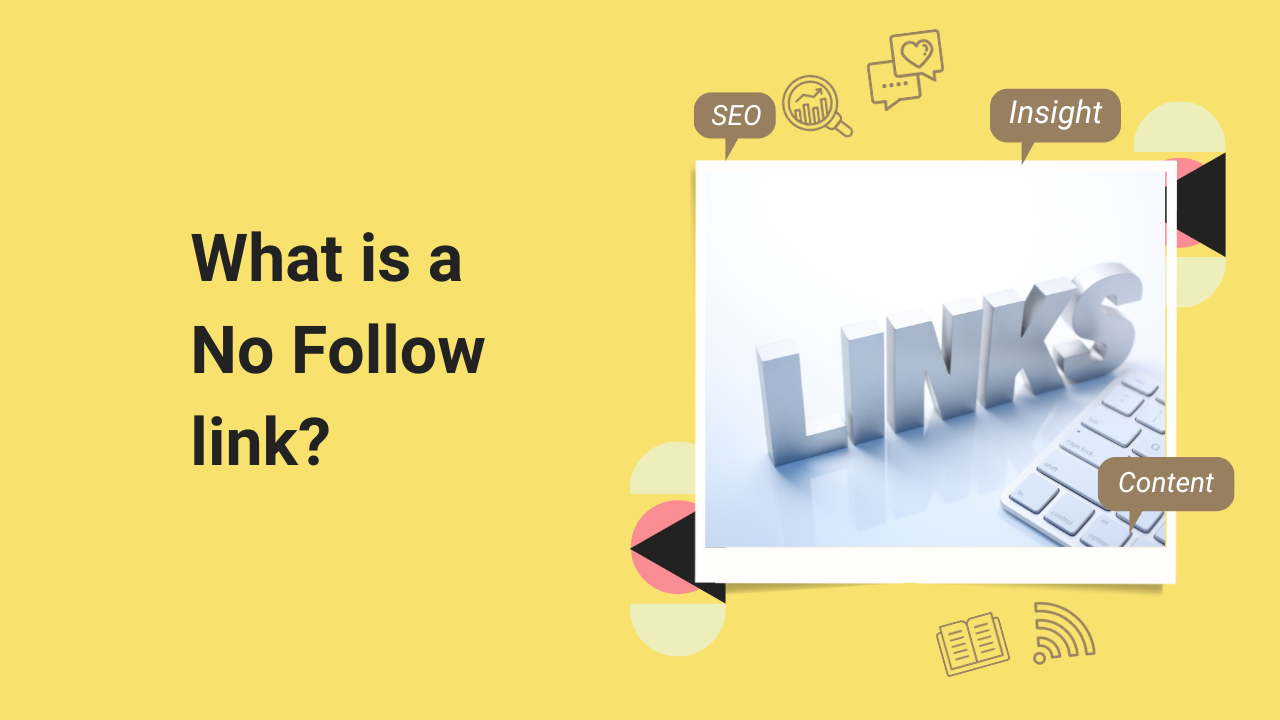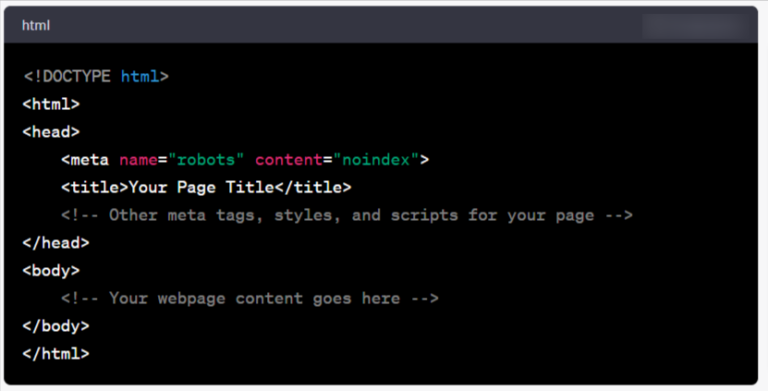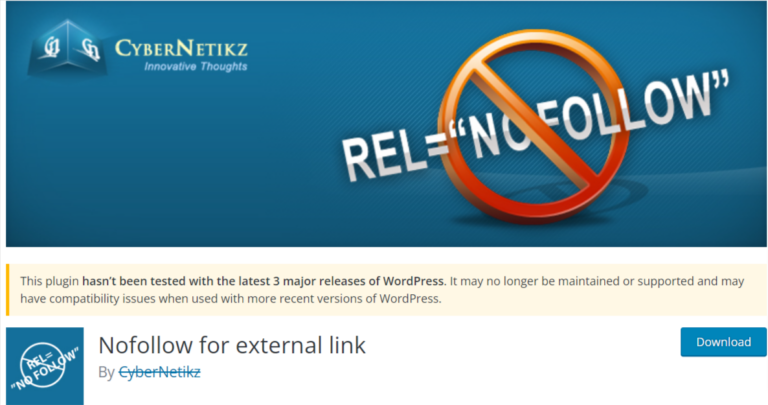
Table of Contents
Nofollow links include the “rel=”nofollow” HTML attribute. This attribute instructs search engines to disregard the linked page, as these links do not transfer any PageRank and are unlikely to influence search engine rankings.
Difference between No Follow Link vs. Do Follow Link
The HTML tag for a link typically looks like this:


<a href=”https://example.com” rel=”nofollow”>Visit Example</a>
<a href=”https://example.com”>Visit Example</a>
The sole technical distinction between the two types of links lies in the presence of the nofollow tag.
In practical terms, an average user has no discernible difference between a nofollow backlink and a dofollow link. You can click both link on, copied, and utilized in the same manner as any other hyperlink on the internet.
In search engine optimization, there’s a notable disparity between nofollow and dofollow links.
To put it simply:
Dofollow links can boost your search engine rankings, whereas nofollow links typically have little to no impact on them.
Here’s a more detailed explanation:
Google and other search engines consider links a fundamental element in their ranking algorithms.
Google’s ranking algorithm is concerned with dofollow links when determining a website’s position in search results. It is essential to understand that nofollow links do not possess the ability to convey any PageRank, as affirmed by Google. In essence, if a link does not provide PageRank, also called “link authority,” it will not enhance your Google rankings. (However, it’s essential to acknowledge that there may be specific situations where this guideline does not apply, which we will address later.)
How can you determine if a link has a "nofollow" attribute?
To verify whether a link is marked as “nofollow,” follow these steps:
- Right-click within your browser and select “View Page Source.”
- Next, search for the link within the HTML code of the page.
- If the “rel=’nofollow'” attribute is present, it indicates that the link is marked as nofollow; otherwise, it is classified as a dofollow link.
Another option is to employ the Chrome extension “Strike Out Nofollow Links.”

With this practical tool, it becomes automatic to visually identify and distinguish nofollow links as they are crossed out on the page.
Why did search engines introduce the "nofollow" attribute?
Nofollow SEO stands as a crucial pillar within the realm of search engine optimization (SEO). It is a strategic tool wielded by savvy website owners and seasoned SEO professionals to exercise precise control over the distribution of PageRank. The core objective? Shield their websites from the clutches of potentially detrimental low-quality or spam-ridden content.
Google created the “nofollow” tag to tackle the growing issue of spam comments on blogs. As blogs became more popular, spammers started putting links to their websites in words, which was a big problem. So, Google created the “nofollow” tag to stop these spammers in their tracks.
This caused two big problems:
First, spammy websites started doing well in Google’s search results. This pushed the good-quality websites down the list.
Secondly, because the spammy link trick worked so well, people kept on doing it more and more in blog comments, and it got out of hand quickly.
In 2005, Google was instrumental in creating the nofollow tag, which they later incorporated into their search algorithm. Over time, this tag gained acceptance among other search engines like Bing and Yahoo.
What categories of links are tagged as nofollow?
Any link incorporating the nofollow tag is technically categorized as a nofollow link. Nevertheless, in practice, links originating from the following sources are frequently designated as nofollow:
- Comments made on blog posts
- Links within social media content (such as those in Facebook posts or YouTube video descriptions)
- Links present in forum posts or user-generated content
- Specific blogs and news websites, like the Huffington Post
- Links generated from “widgets”
- Links featured in press releases.
The rel=”nofollow” tag is applied to all outbound links on these well-known websites:
- Quora
- YouTube
- Wikipedia
- Twitch
- Medium
Moreover, one more category of links should be marked as nofollow.
Paid Links
Google’s Webmaster Guidelines state that when you’ve paid for links, you should either use the nofollow attribute or opt for the newer “rel=sponsored” attribute.
Why? Because Google prefers that you earn all your links
For instance, if you purchase a banner ad placement on a website, Google insists that you must mark the link in the banner with a nofollow attribute.
Failure to do so could result in your website being penalized by Google.
Are Nofollow Links Beneficial for SEO?
Some individuals contend, “Nofollow links hold no sway over SEO.”
On the flip side, others state, “While nofollow links may not carry the same weight as dofollow links, they still offer some SEO benefits.”
So, what’s the real story? First and foremost, what is Google’s official position on nofollow links?

“The use of ‘in general’ hints that there may be instances where they indeed follow these nofollow links.”
How can nofollow links be beneficial?
Let’s explore this further:
1. Nofollow links could offer a direct SEO advantage.
As illustrated earlier, various experiments and industry studies have indicated that nofollow links may result in higher Google rankings, although the data still needs to be clarified.
2. Nofollow links have the potential to drive traffic to your website.
Remember that a well-placed nofollow link can send valuable visitors to your site.
3. Nofollow links can sometimes translate into dofollow links.
Obtaining a nofollow link from a popular website could result in the creation of several dofollow links.
4. A natural link profile includes nofollow links.
An unnatural link profile elevates the risk of facing penalties from Google. To avert these penalties, conducting a meticulous but straightforward examination of your website’s backlinks is advisable. Websites with top-notch backlinks tend to achieve higher search engine rankings.
Nofollow links play a significant role in shaping a genuine link profile.
How do nofollow and noindex differ from each other?
When you apply the noindex directive as a metatag, it communicates the request to omit a specific page from their index to search engines.

Conversely, nofollow links signify to search engines that they should refrain from pursuing a specific link. Therefore, if you aim to prevent a page from being indexed, depending on a nofollow link won’t fulfil that objective. Instead, consider implementing the noindex tag.
How can I incorporate nofollow links into my site?
In a nutshell, the procedure is contingent on the technology that drives your website.
For example, if you’re utilizing WordPress, you’ll find that the nofollow attribute is automatically assigned to links within blog comments.
You’ll also find WordPress plugins designed to change your website’s links into nofollow links.

If not, the process entails partnering with a developer to manually or automatically implement the rel=”nofollow” tag for your external links.
In addition to managing nofollow links, it’s crucial to monitor how search engines index your website’s pages. To do this, consider using a “No Index Checker” tool. It confirms that specific pages are excluded from search results by correctly applying the “noindex” meta tag. The tool scans your site and provides a report, helping you control your search engine rankings.
About the Author
My name’s Semil Shah, and I pride myself on being the last digital marketer that you’ll ever need. Having worked internationally across agile and disruptive teams from San Fransico to London, I can help you take what you are doing in digital to a whole next level.



